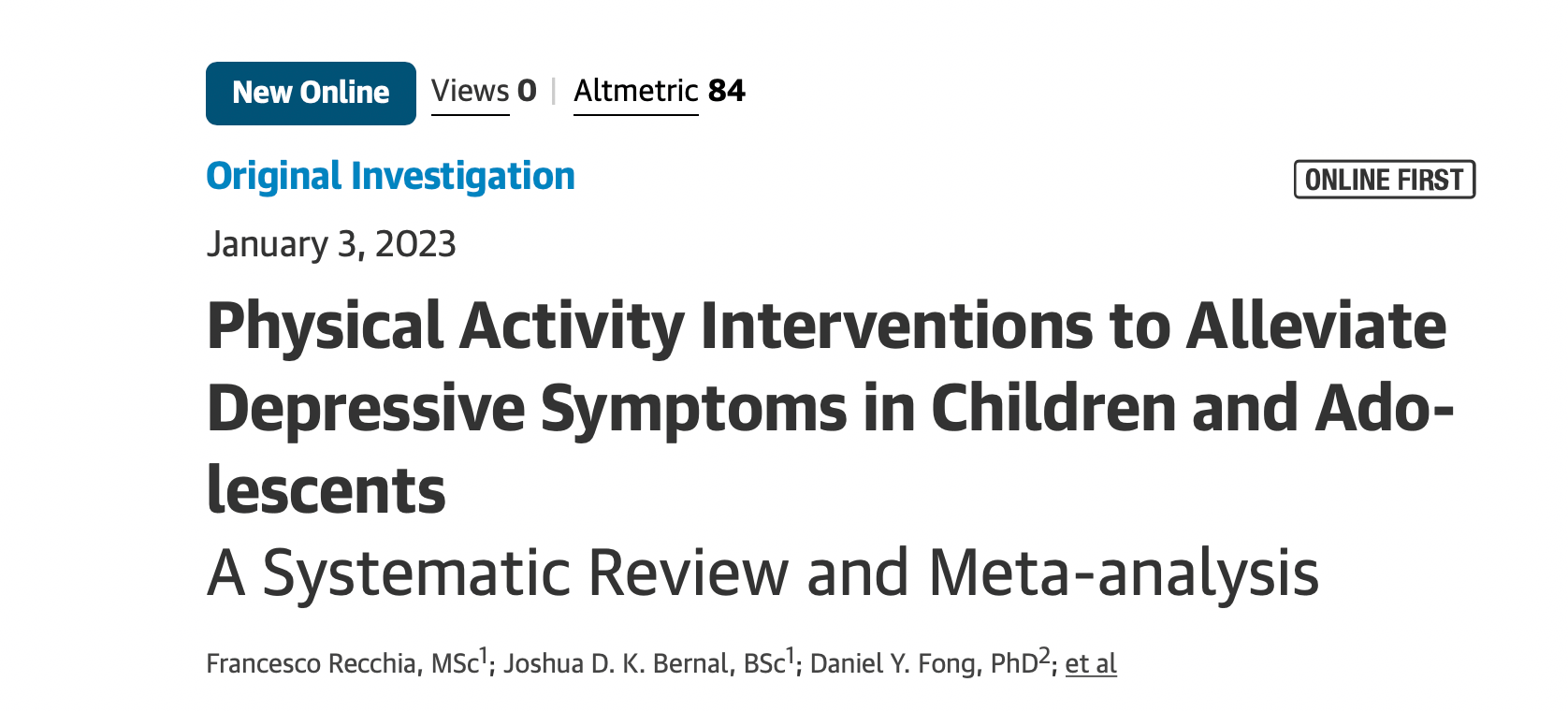
Question Can physical activity interventions alleviate depressive symptoms in children and adolescents?
Findings This systematic review and meta-analysis included 21 studies involving 2441 participants. The results indicate that physical activity interventions were associated with significant reductions in depressive symptoms compared with the control condition.
Meaning The available evidence supports physical activity interventions as an alternative or adjunctive approach to alleviate depressive symptoms in children and adolescents, substantiating the beneficial influence of physical activity on the mental health of pediatric populations.
Abstract
Importance Depression is the second most prevalent mental disorder among children and adolescents, yet only a small proportion seek or receive disorder-specific treatment. Physical activity interventions hold promise as an alternative or adjunctive approach to clinical treatment for depression.
Objective To determine the association of physical activity interventions with depressive symptoms in children and adolescents.
Data Sources PubMed, CINAHL, PsycINFO, EMBASE, and SPORTDiscus were searched from inception to February 2022 for relevant studies written in English, Chinese, or Italian.
Study Selection Two independent researchers selected studies that assessed the effects of physical activity interventions on depressive symptoms in children and adolescents compared with a control condition.
Data Extraction and Synthesis A random-effects meta-analysis using Hedges g was performed. Heterogeneity, risk of bias, and publication bias were assessed independently by multiple reviewers. Meta-regressions and sensitivity analyses were conducted to substantiate the overall results. The study followed the PRISMA reporting guideline.
Main Outcomes and Measures The main outcome was depressive symptoms as measured by validated depression scales at postintervention and follow-up.
Results Twenty-one studies involving 2441 participants (1148 [47.0%] boys; 1293 [53.0%] girls; mean [SD] age, 14 [3] years) were included. Meta-analysis of the postintervention differences revealed that physical activity interventions were associated with a reduction in depressive symptoms compared with the control condition (g = −0.29; 95% CI, −0.47 to −0.10; P = .004). Analysis of the follow-up outcomes in 4 studies revealed no differences between the physical activity and control groups (g = −0.39; 95% CI, −1.01 to 0.24; P = .14). Moderate study heterogeneity was detected (Q = 53.92; df = 20; P < .001; I2 = 62.9% [95% CI, 40.7%-76.8%]). The primary moderator analysis accounting for total physical activity volume, study design, participant health status, and allocation and/or assessment concealment did not moderate the main treatment effect. Secondary analyses demonstrated that intervention (ie, <12 weeks in duration, 3 times per week, unsupervised) and participant characteristics (ie, aged ≥13 years, with a mental illness and/or depression diagnosis) may influence the overall treatment effect.
Conclusions and Relevance Physical activity interventions may be used to reduce depressive symptoms in children and adolescents. Greater reductions in depressive symptoms were derived from participants older than 13 years and with a mental illness and/or depression diagnosis. The association with physical activity parameters such as frequency, duration, and supervision of the sessions remains unclear and needs further investigation.